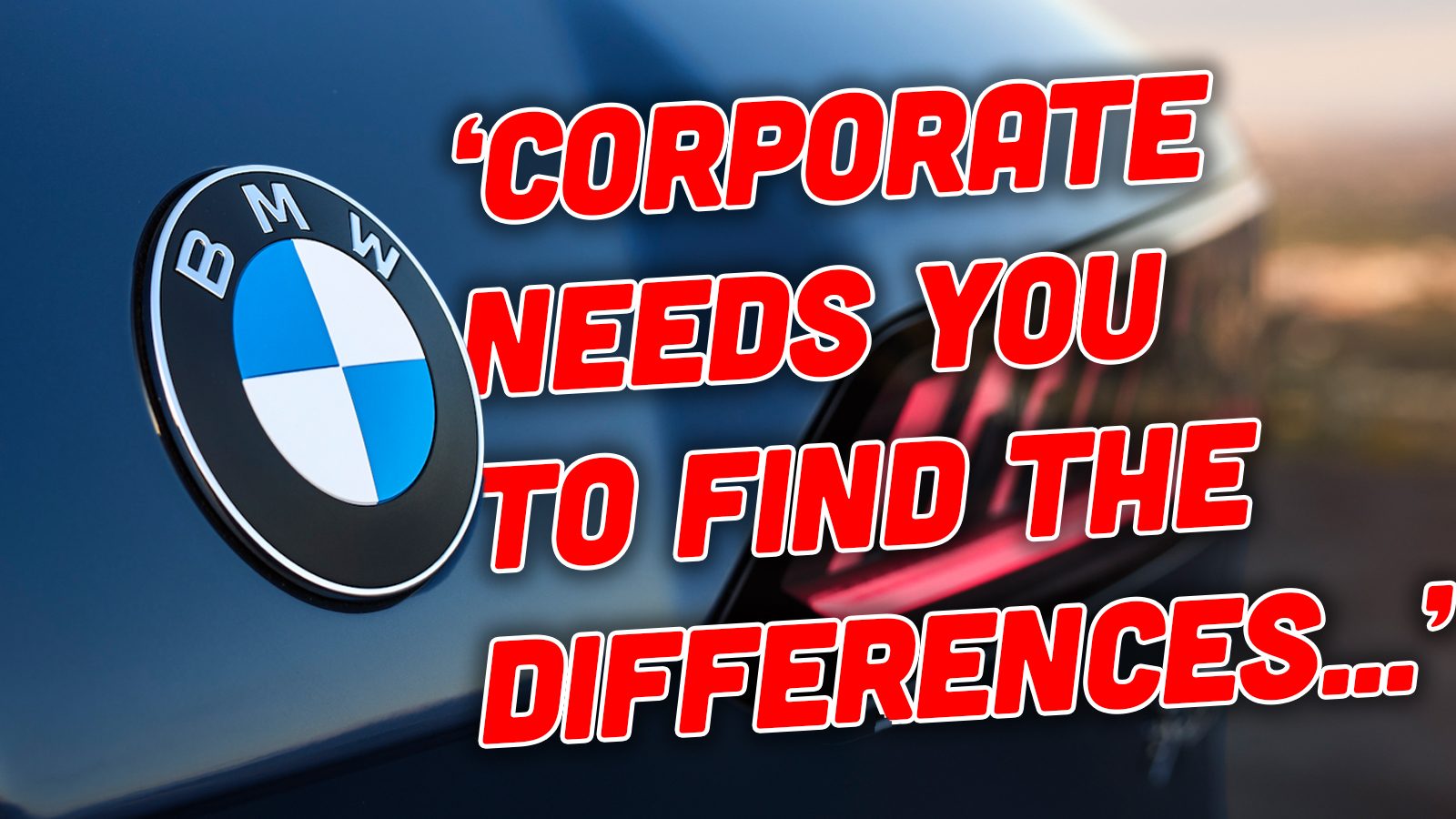Man, I don’t know who or what they have working at Playmobil’s automotive plastic things department, but whatever it is, they’re not playing fair. I’m an old man, I shouldn’t find myself desiring injection-molded plastic toys from a company that targets those weird smart-family kids who always have friends from Europe over and eat Nutella, and yet here we are. All because Playmobil somehow knows exactly what details to include on their iconic classic car-based toys, like what they did for their new Citroën 2CV toy. They give you multiple headlight lenses, so you can pick between traditional French-market yellow headlights or more mainstream Europe clear headlights. Those fuckers. Those greedy, clever bastards. They know that a detail like that is meth-soaked catnip for sad obsessive motherscratchers like me, and that’s why they’re so damn good at this.
Yes, Playmobil knows exactly what they’re doing. Even if the Playmobil humans are radically simplified approximations of the human form, their cars tend to be wildly accurate. A couple years back they made some air-cooled Volkswagen toys, a Beetle and a Bus, and I marveled at how incredibly detailed they made the engines:

I think it’s clear that when it comes to old cars, Playmobil is not fucking around.

For one thing, they’ve gone back to the 2CV’s roots, thematically, since it was originally designed to be a car for French farmers, so much so that the design brief famously included the requirement that it should be able to traverse a plowed field with a basket of eggs and not break a single one. To that end, the set comes with a couple of geese, a pig, a farmer, and some milk jugs. I’m sure at least one of those is capable of laying eggs.

They’ve also included what I guess is some kind of Plamobil hippie or counterculturalist, and a French cop, I suppose so your kid can have fun playing getting harassed by the man, or, I suppose, getting hassled by l’homme.

The hood doesn’t open on the 2CV to reveal the engine, which is disappointing, but the trunk opens to hold the milk jugs or some change or your drug stash, so that’s good. I suspect that Playmobil’s injection-molding technique makes opening a large curved panel like the hood impossible; the Beetle’s front trunk didn’t open, either, and I suspect for the same reasons. I guess the state of Plamobil tech in 2023 is just able to make doors and rear lids open on cars.
Based on the taillights and the 2CV6 Special nameplate on the car, I think the model being shown here is a 1976 2CV, though I suppose it could be an 80s-era one, too. But definitely post 1970, because of those angular taillights from the Citroën Ami.

And, speaking of lights, I should show you the real party trick of the Playmobil 2CV: the swappable light colors:

I suppose to many this may seem like a minor, even silly thing, but there’s something about those French Selective Yellow headlights, and Playmobil knows this. They also know that making them swappable for clear lights just amps up the appeal of them, somehow, in some way I can’t quite explain. As for why the French were the only country to mandate yellow headlights, which they did from 1937 or so until 1994, there’s a number of explanations. Automotive lighting guru Daniel Stern explains it like this:
What is “selective yellow” light?
It is a particular kind of yellow light that was required from all road illumination lamps on vehicles in France for many years. Light appears (more or less) white when it contains a mix of all the colours—red, orange, yellow, green, blue, indigo, and violet. By removing (filtering) the blue, indigo, and violet out of white light, we get selective yellow light. It is not the same as the more orange colour called “yellow” or “amber” used for vehicle turn signals, side marker lights, and (in some countries) clearance and front position or “parking” lights.
Why and when did France require selective yellow light?
A number of folk explanations have long been in circulation for the French yellow-lights requirement that started in the mid-1930s. Some say it was a tactical decision at the urging of the military, to facilitate identification of the nationality of a vehicle at night, useful during the war. Some say it was because French road pavement had peculiar reflective properties. Some say it was nothing but market protectionism. And a particularly persistent myth holds that yellow light “penetrates fog better” because blue light scatters more, as evidenced by the sky being blue. The sky is indeed blue because of Rayleigh Scattering—short-wavelength light such as blue, indigo and violet does indeed scatter more—but only in droplets and particles equal or smaller than the wavelength of the light. That’s much smaller than the particles and droplets that make up ground-level fog, rain, and snow; there is no Rayleigh Scattering happening to the light from a vehicle’s front lamps, and whatever blue light those lamps might be producing does not get scattered by the fog, snow, or rain more than other colours of light.
The fact is, in late 1936 lawmakers in France put forth legislation requiring road-illumination lamps (headlamps, fog lamps, etc.) on all vehicles to emit selective yellow light. This legislation was based on advice from the French Central Commission for Automobiles and Traffic, which in turn was based on experiments done by the French Academy of Sciences, concluding that selective yellow light is less glaring than white. Here is the decree, published in the 5 November 1936 edition of the Journal Officiel de la Republique Française—Official Journal of the French Republic, like the U.S. Federal Register or the Canada Gazette.
There are also theories that the yellow lights were chosen for military reasons, possibly to make them easy to differentiate from vehicles from Germany. Really, no one is exactly sure how it started, but it definitely became a hallmark of French automotive quirkiness.
So, there you go. Another hard-to-resist car toy to clutter your home and make you wonder if you’ve even grown up at all, or just gotten grayer and tubbier. Good work, as always, Playmobil.

-
Seven Car-Related Toys That Are Perfect Gifts For Kids Or For You To Take When The Kids Aren’t Not Looking
-
A Gun That Shoots Cars, Punchcard-Controlled Cars, And Tiny Gas-Powered Toy Cars: Weird Commercials Of Toys Past
-
Get Your Sketchy On With The Hop Rod, A Gloriously Insane Combustion-Powered Pogo Stick
-
These Strange And Wildly ’70s Toy Cars Are Samples Of A Weird Aesthetic That’s Pretty Much Extinct Now
-
The Undersides Of Those Toy Cars Sold At CVS And Walgreens Are Accurate But In The Strangest Ways
Support our mission of championing car culture by becoming an Official Autopian Member.









Late to the party on this one! But I know the year!
I begged my partner to stop at the toy store in town while I was visiting them in The Netherlands (they are absolutely used to me buying car related toys at this point.) I told them I needed to see if they had this model (because as far is I can tell they aren’t selling it in the states yet???? Correct me if I’m wrong.)
Either way, I picked one up and in the little book of build instructions that come with it they list this as a 1980 model year.
Jason, hit me up if you want me to grab you one before I fly out!
Ha, this was great:
“They’ve also included what I guess is some kind of Plamobil hippie or counterculturalist, and a French cop, I suppose so your kid can have fun playing getting harassed by the man, or, I suppose, getting hassled by l’homme.”
Reminded me of how in the 90s and 00s some British vintage car magazines would refer to especially durable engines, such as the Citroen Traction Avant and DS engines & the Austin Seven engines, as being “as tough as a French riot cop.”
I’m most amazed how reasonable the cost of these models are! most under $100 CAD!
Petition to bring back selective yellow to cut down the glare from misaligned LED headlights, anyone?
What would have REALLY gotten my nerdbrain going would be if they had included two engines to install in the front AND the rear for a 2CV Sahara 4×4 model.
Anyway, the geese are definitely the drivers here, and the Playmobil humans are running away.
Torch: You really need to get out more often!
When he does he just ends up helping David move.